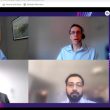Responses to FirstNet public notice reveal little consensus on ‘public-safety entity’ definition
Commenters in FirstNet’s public-notice proceeding examining the definition of a “public-safety entity” that could qualify for prioritized access on the proposed nationwide public-safety broadband notice offered varied opinions, with many expressing concern that the latest preliminary interpretation could create practical issues.
For the second consecutive year, commenters unanimously supported the notion that traditional public-safety entities—fire, law enforcement and emergency medical service (EMS)—are public-safety entities that should be primary users of the FirstNet system and should be eligible for priority access on the network. What has been debated is whether the public-safety-entity qualification should be extended to critical-infrastructure entities, such as governments, medical facilities, utilities and transportation agencies.
Last year, FirstNet examined the definition of “public-safety entity” in its first public-notice proceeding, which stated that a public-safety entity is any entity that provides public-safety services at any time, even if most of its functions typically are not related to public safety. Most respondents agreed with FirstNet’s position, with the notable exceptions of wireless carriers and the Association of Public-Safety Communications Officials (APCO), which said the interpretation represented an overreach that was not intended by Congress.
In this year’s third public notice, FirstNet offered an adjusted preliminary legal interpretation that the “public-safety entity” definition could be extended to a subgroup of critical-infrastructure entities, as opposed to the entire organization. The third public notice cites the case of a utility worker who clears a dangerous downed electrical line from an area—thereby allowing first responders to proceed with their duties—as an example of someone within a non-traditional public-safety group potentially qualifying as a public-safety entity.
In addition, the preliminary legal interpretation included in third public notice clarifies that “the primary ramification of falling within this definition is that a public-safety entity is served by FirstNet directly, rather than as a commercial customer of a secondary user of FirstNet’s spectrum” and that “public-safety entities would be served by the FirstNet core network,” as the state of California noted in its comments.
In its response, APCO acknowledged that FirstNet’s altered third-notice interpretation was not as bad as its first-notice interpretation, but the public-safety-communications organization clearly reiterated its opposition.
“APCO continues to strongly disagree with FirstNet’s interpretation of ‘public safety entity,’” the APCO filing states. “While the Third Notice is a step in the right direction, APCO holds to the legal analysis included in its response to FirstNet’s original proposal.
“Public-safety entities include first responders and the personnel, agencies, and authorities who share their mission, not those entities that occasionally provide support to first responders. An alternative, broader interpretation would violate the plain language of the law and ignore Congress’ clear intent to establish a network for first responders.”
APCO’s filing also asserts that the FirstNet third-notice interpretation would undermine the financial viability of the nationwide public-safety broadband network (NPSBN) by limiting the potential commercial benefits to potential partners that will be needed to build and maintain the system.
“Broadly defining ‘public safety entity’ would reduce the value of public-private partnerships, and wireless service providers may determine not to partner with FirstNet, if it means a further reduction to their commercial customer base,” the APCO filing states. “FirstNet must avoid any such outcome.”
This sentiment was echoed by wireless carriers, such as AT&T.
“The more users that are eligible for primary NPSBN access, the smaller the pool of secondary users, disrupting the Act’s carefully calibrated scheme,” AT&T’s filing states. “Entities—government and otherwise—that currently use commercial services may rely on the NPSBN. Then, the more the NPSBN comes to resemble a commercial network, the less the incentive for private sector partnerships—a central feature of the NPSBN envisioned by Congress—thereby limiting the viability of the network altogether.”










